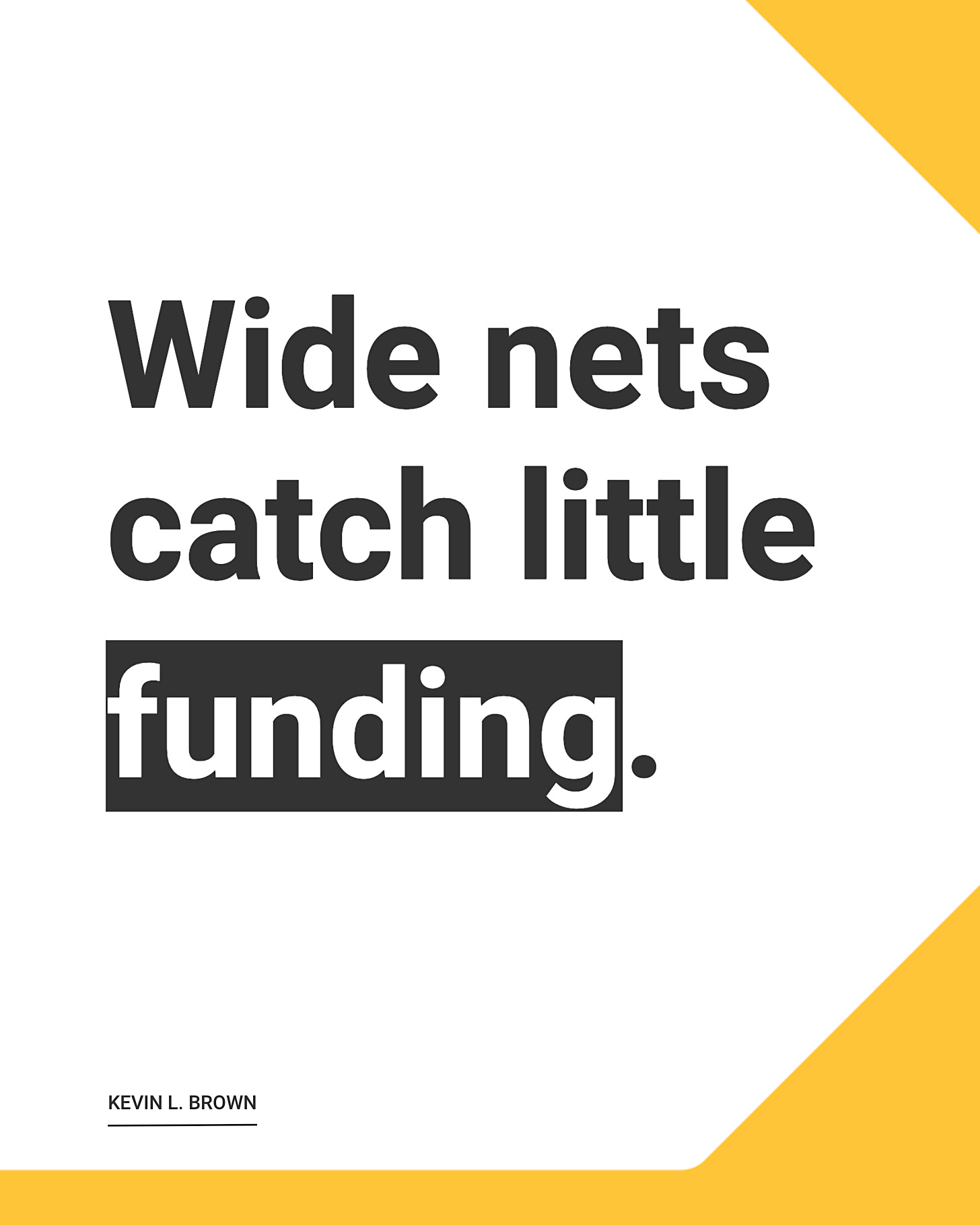Hello, hello
This weekend I’m wrapping up the final edits of my first book. 📚 Upon reading my manuscript, the copyeditor responded:
“Of all the many business books I’ve copyedited in recent years, yours looks about drop-dead perfect, in terms of writing and language and presentation. I’ve seldom seen such a book offered for me as a project.“
Humbled.
Stay tuned for a launch announcement soon.
— Kevin
💪🏽💛
Three insights
1. Equality is fruits. Justice is roots.
Maybe we shouldn’t fight for equality.
Instead, aren’t equity and justice the goals?
Because “treating different things the same can generate as much inequality as treating the same things differently,” says Kimberlé Crenshaw.
Equality aims to promote fairness. However, according to the Annie E. Casey Foundation, it only works if everyone starts from the same place.
Words matter.
So as we build our brands, write our fundraising applications, and advance our social change movements — are we using the correct terms, correctly?
🙅🏾 INEQUALITY
Unequal access to opportunities
🍎 EQUALITY
Evenly distributed tools and assistance
🪜 EQUITY
Custom tools that identify and address inequality
🌳 JUSTICE
Fixing the system to offer equal access to both tools and opportunities
There’s also 🌱 SYSTEMS CHANGE — not pictured — which would nurture the underlying soil early enough that this tree grows justly in the first place.
Let’s remember:
“Equality is giving everyone the same pair of shoes. Equity is giving everyone a pair of shoes that fits.”
Uproot inequality.
Harvest equity.
Grow justice.
2. Pitch deck perfection.
Donors snooze through stuffed pitch decks.
And wordy pitches are a fundraising repellent.
Here’s why. ⤵
A pitch deck is only meant to stimulate interest and further conversation. Not convey every detailed aspect of your brand.
But we nonprofit leaders are so accustomed to chasing money and selling our work. Accustomed to the unfair power imbalance with funders, thinking we must impress.
In this two-minute guide, you’ll learn about:
💻 Airbnb’s first and famous pitch deck
🗣️ The average attention span
🚨 5 sections and 10 slides
Tease interest, then talk.
Sculpt your perfect pitch deck now.
3. Wide nets catch little funding.
Diversified fundraising keeps you fishing forever.
Sure, it helps you survive early on.
But it’s not how you reel in the big fish.
Let this sink in. ⤵
Of those unicorn nonprofits that reach $50 million in annual budget, 90% of them raised the bulk from a single type of funding. Such as individual donors, foundations, corporations, government, 𝘰𝘳 service fees.
Not by accumulating various sources of funding.
The Bridgespan Group found this secret formula in a study of 200,000 nonprofits over 40 years.
They call it The Myth of Diversification.
And the evidence contradicts a lot of conventional (but inaccurate) wisdom in our sector.
The authors say that small nonprofits grow better by choosing a primary funding source early, ensuring it aligns with their mission and program goals.
“It is a strategy that avoids spreading resources thinly across a variety of funding opportunities.”
In other words:
If you want to grow significantly (not all need to!), you have to eventually muster the courage to put all your eggs in one basket.
Don’t get me wrong.
We’re not talking about relying on a single donor. That’s too risky. Instead, a single type of donor, of which many in that category are funding you.
“Each funding source is its own business model,” says Jane Leu. “No org can simultaneously run five business models at once. Boards can pressure leaders to pursue diversification. I would ask Boards to… encourage the right kind of diversification — more funders in a primary source.”
So it’s not about casting a wider fundraising net.
The data says to be selective.
Build a brand that turns off as many donors as it turns on. Because it’s nearly impossible to communicate (well) with multiple types of funders at once.
The bottom line?
Break the myth. Target your waters.
Diversified nets catch minnows, not whales.
The weekly bonus
As you work to narrow your donor targets, here’s a handy guide I recently published.
The bonus weekly bonus
Amidst all the poverty, injustice, greed, and corruption we’re all fighting, it’s good for the soul to see a few recaps of positivity from the past year.
😀 6 good news stories from 2024
🎈 Need a Lift? 13 Stories That Inspired Us in 2024
🌻 Stories that gave us joy (and a new workout routine) in 2024
Need my help?
If this advice is useful — but you’re ready to get even more fundable and findable — check out Brand Bootcamp.
It’s our self-paced, online course to maximize your funding. In just 15 minutes a day.
P.S.
What it’s like to be James Clear — best-selling author of Atomic Habits — in the New Year.









Generous and helpful. Thank you
What a wonderful comment from your editor, Kevin - you can take a few days off to relax now!